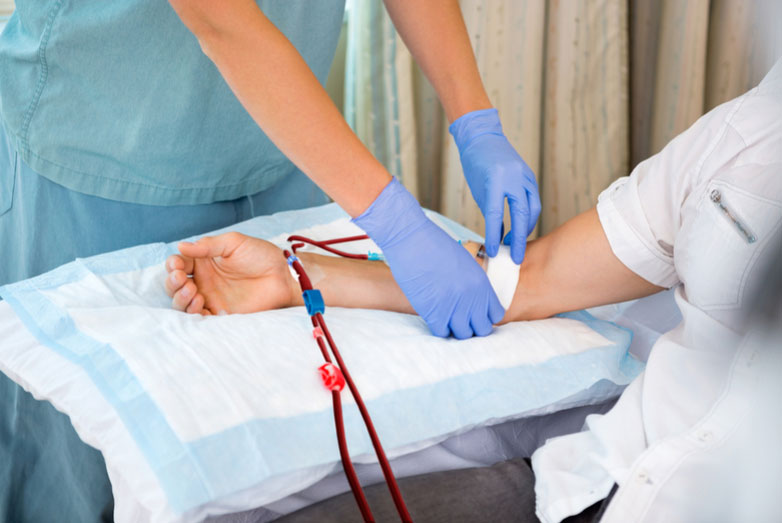Dialysis is a lifesaving treatment method for kidney failure. It is typically given a couple times per week, so while it will become a normal part of your routine, your first dialysis treatment may seem intimidating simply because you don’t know what to expect.
Before a patient undergoes dialysis, they must have an access point for the machine inserted in the arm or wrist. Typically, an artery and a vein (in the arm or wrist) are connected by a vascular surgeon who specializes in the circulatory system. An AV fistula, more technically known as an arteriovenous fistula, produces the most efficient type of dialysis and creates an access point that is strong enough to withstand multiple treatments per week. The process takes place in an operating room, but it’s a fairly basic procedure that shouldn’t cause much worry. The procedure can be done under general anesthesia or the arm can simply be numbed. Within a few hours you should be in and out of the operating room and back home, as this is an outpatient procedure.
There are different options, including a radial cephalic fistula, which is the most difficult to create. It involves connecting the radial artery with the cephalic vein located in your wrist. There are other options to consider as well, selected on a patient-by-patient basis.
This surgery is important because it provides a way for you to get hooked up to a dialysis machine. It is usually conducted around six months before your first dialysis treatment. This might seem like a long time but there’s good reason for the wait. For one, the AV fistula must heal completely so that it is sturdy and will not collapse during treatment. As the area heals, blood pumps through the artery and stretches the vein walls. As a result, the access point is more durable and lasts longer.
The other option is to undergo an AV bypass graft surgery. For immediate dialysis treatment, a dialysis catheter can be used until a long-term solution is implemented.
Your First Dialysis Treatment – what happens?
So, what happens during dialysis treatment? Your first dialysis treatment will occur after you’ve already had the minor surgery to connect a vein and artery. Two needles are placed in the AV fistula. One of these needles is tasked with removing blood and transferring it to the machine where it is filtered for toxins your kidneys cannot naturally remove. The other needle transports the clean blood back into your body.
How long will you be there?
Expect to be at your dialysis treatment appointment for around 3 to 4 hours. The average patient receives dialysis three times a week. You’ll work with your doctor and care team to identify an adequate number of treatments.
Bring Stuff to Do
Bring your phone (fully charged) with headphones so you can listen to a podcast or watch a show. A good book is another great option to help you stay busy and keep your mind off the treatment. Some patients prefer to sleep during treatment, but even if you think you may snooze off, bring something to do in case you can’t fall asleep as easily as you thought.
Need a Ride to Dialysis Treatment?
Dialysis shouldn’t be painful, but it can make you feel tired and groggy. That’s why many patients do not drive after dialysis treatment. We are leading the way when it comes to dialysis transportation in Melbourne, FL., and beyond. For one, we offer special discounts for dialysis patients who use our services 3 times a week. Contact us today to learn more.

